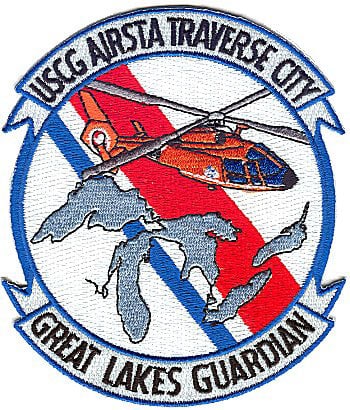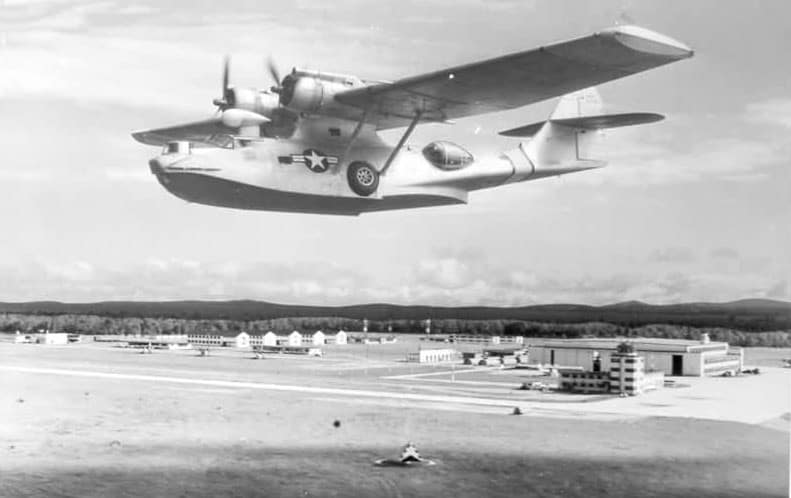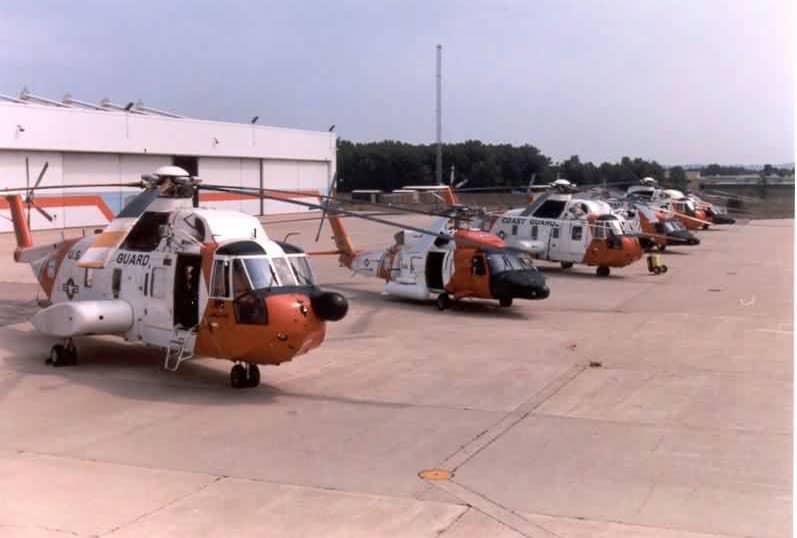 In 1938, a Coast Guard aircraft was assigned as an Air Patrol Detachment at Traverse City, Michigan to operate on a seasonal basis and determine the feasibility of constructing an air station. During 1941 a Grumman JRF-3 Grumman Goose twin engine amphibian number V-192 was assigned and by the end of the year a Grumman J4F-1 Widgeon twin engine amphibian number V204 had been added.
In 1938, a Coast Guard aircraft was assigned as an Air Patrol Detachment at Traverse City, Michigan to operate on a seasonal basis and determine the feasibility of constructing an air station. During 1941 a Grumman JRF-3 Grumman Goose twin engine amphibian number V-192 was assigned and by the end of the year a Grumman J4F-1 Widgeon twin engine amphibian number V204 had been added.
The first confirmed use of the present air station site was by the United States Navy which established an air facility for research and development of pilotless aircraft. The Coast Guard began basing aircraft at the facility in 1944. At the end of World War II the Naval Air Facility Traverse City was made available to the Coast Guard and on 15 November 1945 the USCG Air Station Traverse City came into being. The site also became the location of a commercial airport. In 1949 the Coast Guard deeded 20 acres to the city and when the new 10-28 instrument runway was constructed additional land was provided by the Coast Guard. The original Navy structures were utilized until 1980 when a new maintenance and administrative buildings were completed. The new hangar provided over 50,000 square feet of work space; including the hangar deck, work shops, and offices.
The primary search and rescue aircraft during the late 1940’s were PBY-5As and in the early 1950s were replaced by UF-1Gs. These were in turn replaced with the upgraded UF-2G. In 1945 two HNS-1 helicopters were assigned. These were replaced by a Bell HTL for support of the icebreaker USCGC Mackinaw. In the late 1950s two Sikorsky HO4S-3G helicopters were based at the air station. Helicopter capability was upgraded with the assignment of the HH-52A amphibious helicopter in the early 1960s. In September 1978 the HU-16 (UF-2G) aircraft had reached the end of their service life and were replaced by three C-131 search aircraft. In June of 1983 two HU-25A fan jets were assigned to support the air station missions. In 1986, the rescue capabilities of the helicopter and the patrol capabilities of the HU-25 were combined in the HH-3F Pelican amphibious helicopter. Traverse City became a helicopter only unit operating 3 HH-3Fs. The Sikorsky HH-60J helicopter came aboard in September of 1991. In January 2003, 5 HH-65B Dolphins were placed in service. In 2006 they were upgraded to the HH-65C “Charlie” model.
 Traditionally, the mission of search and rescue is the air station’s top priority. The Traverse City air station was charged with this responsibility in the Great Lakes region. To give some idea of the search and rescue area; the Great Lakes have a surface area of about 95,000 square miles and a shore line of more than 9600 miles. The center of Lake Superior is 185 miles from Traverse City, 150 miles to the center of Lake Huron, 250 miles to central Lake Erie and 450 miles to reach eastern Lake Ontario. At 150 knots in a HU-16 or 90 knots in a HH-52, these distances translated into considerable flight time. In order to enhance the effectiveness of the HH-52, helicopter air stations were established at Detroit, Michigan and Chicago, Illinois.
Traditionally, the mission of search and rescue is the air station’s top priority. The Traverse City air station was charged with this responsibility in the Great Lakes region. To give some idea of the search and rescue area; the Great Lakes have a surface area of about 95,000 square miles and a shore line of more than 9600 miles. The center of Lake Superior is 185 miles from Traverse City, 150 miles to the center of Lake Huron, 250 miles to central Lake Erie and 450 miles to reach eastern Lake Ontario. At 150 knots in a HU-16 or 90 knots in a HH-52, these distances translated into considerable flight time. In order to enhance the effectiveness of the HH-52, helicopter air stations were established at Detroit, Michigan and Chicago, Illinois.
Chicago was later closed as an air station. On April 1, 1995 Air Station Chicago transitioned to Air Facility Glenview under operational control of Traverse City. It closed in 1996 and an Air Facility was established at Muskegon. Air Facility Waukegan was established in 2000 and operational control of Muskegon was transferred to Air Station Detroit. These Air Facilities operate from Memorial Day to Labor Day.
The types of missions assigned to the air station have increased over the years. On the environmental front the role in oil spill prevention has increased as has fisheries law enforcement. Law enforcement support for Federal, State and local agencies has increased. Winter and spring ice patrols have been expanded. Assisting the Coast Guard icebreakers and the iron ore and cement carry vessels in safe navigation in an extended season becomes at times a daily task. An increased role for aircraft in Aids to Navigation operations has also been implemented. As an example; within the northern hundred mile semi-circle centered on Traverse City are nearly 150 aids to navigation. In many instances it is much more economical to supply manned aids to navigation and service others by air than it is to use surface vessels.
Until the assumption of these additional responsibilities and increased pressure to extend the Great Lakes navigation season there was serious question, in view of escalating costs, as to whether, operational justification in fact existed to maintain the aviation unit at Traverse City. Strong justification now exists.



